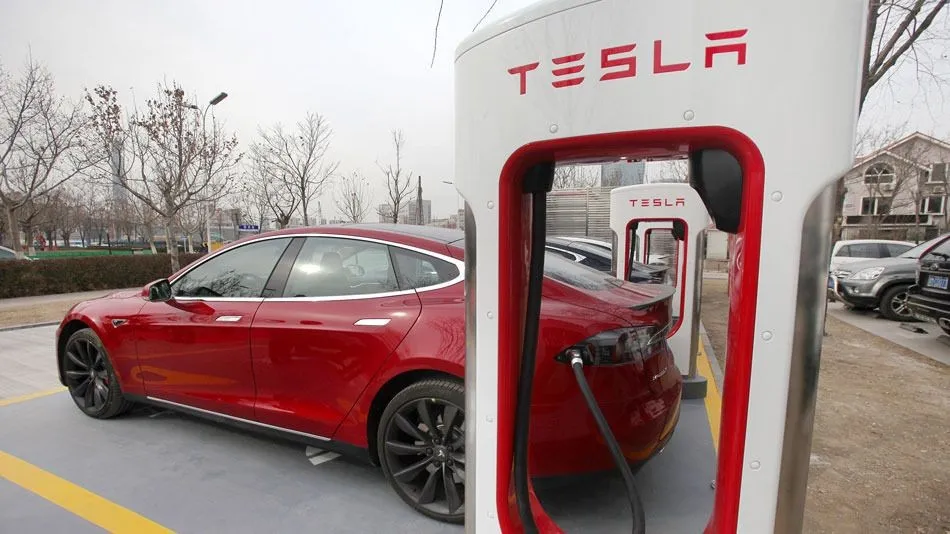Evie Kendal, Deakin University

Tesla’s new “Blade Runner-inspired” electric cybertruck has the world turning its head.
The internet has had a field day since the vehicle’s launch on Thursday, with users finding creative ways to ridicule the truck’s eccentric design.
This isn’t the first time Tesla chief executive Elon Musk has invoked science fiction in his product designs. In 2017, his space agency SpaceX introduced a new type of sleek, form-fitting space suit – in contrast with NASA’s bulky astronaut attire.
Some have accused Musk of tapping into “the public’s science fiction fantasies” as a marketing ploy.
Whether or not this is the case, Tesla’s newest product proves it is possible to go too far on the sci-fi fantasy train.
A sparkling finish, but not a sparkling reception
When it comes to technologies of the future, vehicles and transportation are in the limelight.
In a 2014 Pew Research Centre survey, Americans were asked to describe “futuristic inventions they themselves would like to own”. One of the most common answers was “travel improvements like flying cars and bikes”.
Similarly, if you consult real estate blogs, you’ll come across debates regarding the merits of upgrading to stainless steel or mirror finish appliances before selling a house. Those on the pro side argue the futuristic look will inspire purchases by projecting a more modern image.
So why did the same stainless steel aesthetic fail Tesla completely?
It’s already known Tesla’s consumer base is motivated by a variety of factors, including emotional engagement with new products.
But a more important element at play here is the fact that many customers’ purchasing habits reflect Tesla products as being symbols of self-identity.
When cast in this light, the fact that the cybertruck has been labelled “ugly” goes a long way towards explaining why fans of the brand have shunned the newest family member.
Before Thursday’s reveal, Musk said he “doesn’t care” if people aren’t interested in buying his “futuristic-like cyberpunk, Blade Runner pickup truck”. But from a business perspective, that seems an unlikely opinion for a chief executive to hold.
On Sunday, Musk tweeted claiming the truck had received 187,000 orders (not the same as sales) since the unveiling, up from 146,000 announced in a tweet on Saturday.
This is comparable to demand for Tesla’s 2016 Model 3, which supposedly received 200,000 orders within 24 hours.
It doesn’t seem safe
According to Raphael Zammit, who heads a transportation design program at Detroit’s College for Creative Studies, the Tesla cybertruck’s design “failed” because it focused on style rather than consumer perception.
Zammit says the roof doesn’t “look stable” to a consumer’s non-specialist eye. It’s not that the structure isn’t expected to be sound, it’s that it goes against the standard design principles intended to instil public trust.
Another factor that may have contributed to the truck’s critical reception is the botched “transparent metal” window demonstration during the unveiling. The vehicle’s glass was visibly damaged after being hit with a steel ball.
Nothing undermines consumer confidence like a supposedly armoured window being smashed in the middle of a product launch.
The news for the company’s bottom line is not good, feeding a trend of losses over the year.
The impact of sci-fi on technological progression
The Tesla cybertruck is just the most recent node in ongoing speculation around what future technologies will look like.
There are countless examples in recent media, ranging from discussions of CRISPR and gene testing, to artificial intelligence and flying cars.
Tesla’s sci-fi-inspired cybertruck design is making the headlines, but draws attention away from the greatest contribution sci-fi cinema makes to society. That is, it provides a safe space to explore the possible harms and benefits of new developments, before they become reality.
Sci-fi worlds “test” potential futures for us. Utopian and dystopian sci-fi, in particular, raise questions around ethical and legal structures we might want to pursue or avoid, to achieve the future we want.
Science fiction professor Sherryl Vint notes the genre occupies a unique position, by allowing us to work through our anxieties about our rapidly changing world.
She provides the example of Orphan Black as a sci-fi show that discusses fears associated with human cloning, while also considering the complexities of medical patenting and personalised medicine.
Even if Orphan Black doesn’t end up shaping the technical future of gene technology (let’s hope not), it has certainly made many people think about its possible impact.
And this is probably where the true value of sci-fi lies: in raising questions around the consequences of our emerging technologies, rather than inspiring their designs.
The chicken and egg dilemma
One could even argue it’s problematic to say futuristic technologies are inspired by sci-fi at all.
It may just as easily be the case that such technologies were inspired by early scientific thought, which simply didn’t receive as much attention as the resulting products.
After all, many early sci-fi authors were themselves scientists and engineers, and described possible future developments that were an extension of what they were working on in real life.
It could be argued that real science inspires sci-fi, rather than the other way around.
In either case, sci-fi should be a shared language through which we can discuss technological change, rather than a marketing ploy for companies looking to capitalise on people’s love of futurism.
Plus, as Musk’s cybertruck demonstrates, styling your vehicles on cyberpunk visions of the future may not be the soundest business strategy anyway.
Evie Kendal, Lecturer in Bioethics and Health Humanities, Deakin University
This article is republished from The Conversation under a Creative Commons license. Read the original article.










